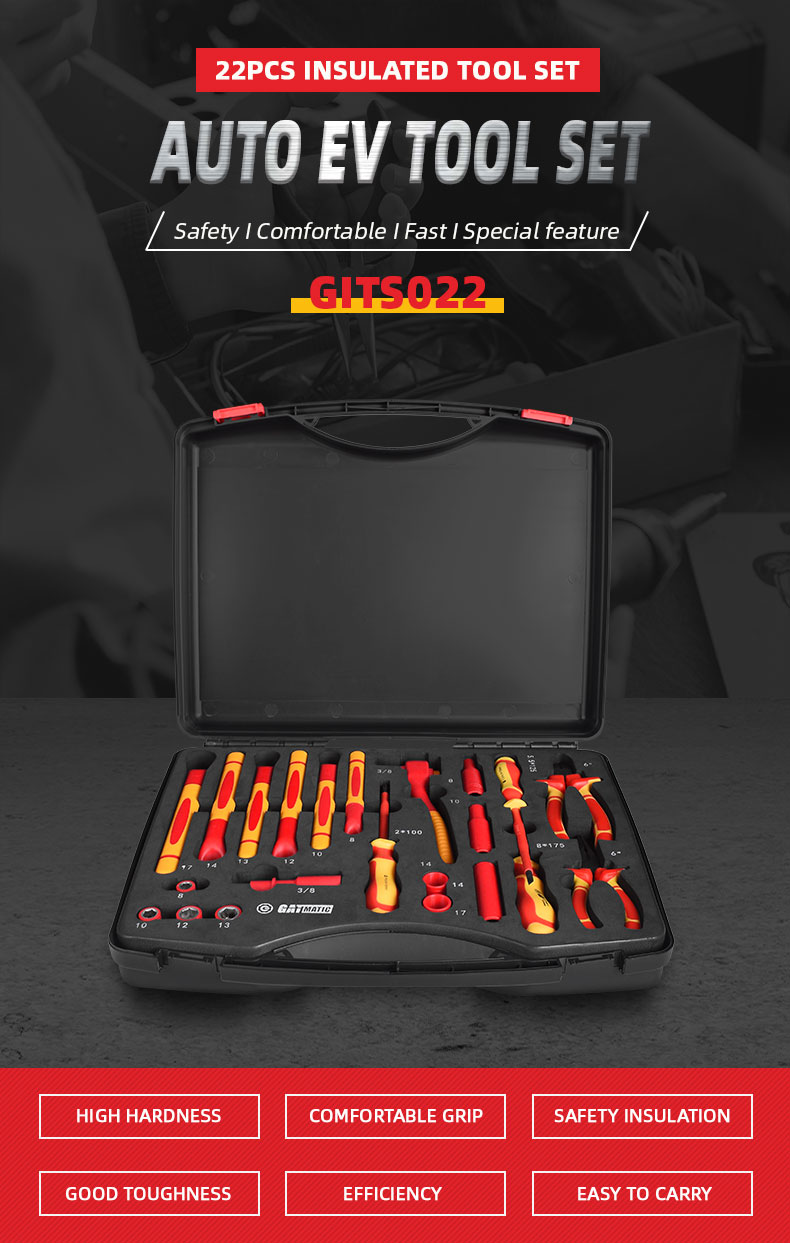Safety First: The Role of VDE Standards in AC 1000V Insulated Tool Kits
Safety is paramount in any field, but perhaps nowhere is it more critical than in electrical work. The inherent risks associated with handling high voltages demand meticulous attention to safety protocols and the use of appropriate tools. One essential component in ensuring safety in electrical work is the adherence to VDE standards, particularly in the design and manufacturing of AC 1000V insulated tool kits. This essay explores the pivotal role of VDE standards in enhancing safety for electrical workers.
I. Understanding VDE Standards
VDE standards, established by the Verband der Elektrotechnik, Elektronik und Informationstechnik (Association for Electrical, Electronic & Information Technologies), serve as benchmarks for electrical safety and quality. These standards encompass a wide range of criteria, including design specifications, testing procedures, and certification requirements. In the context of insulated tools, VDE standards dictate stringent guidelines for insulation materials, construction, and performance to mitigate the risk of electric shock.
II. Components of AC 1000V Insulated Tool Kits
AC 1000V insulated tool kits comprise a variety of hand tools specifically engineered for use in electrical applications. These kits typically include essentials such as screwdrivers, pliers, wrenches, and cutters, all designed with insulated handles and components to withstand voltages up to 1000V. The insulation acts as a barrier between the user and live electrical components, minimizing the likelihood of accidental contact and electrical hazards.
III. Role of VDE Standards in Ensuring Safety
VDE standards play a pivotal role in safeguarding electrical workers by establishing rigorous requirements for the design, manufacturing, and testing of insulated tools. Tools that meet VDE standards undergo comprehensive testing procedures, including insulation resistance, dielectric strength, and mechanical endurance tests, to ensure their reliability and safety in real-world applications. The certification process verifies compliance with VDE standards, providing assurance to users that the tools meet established safety criteria.
IV. Benefits of VDE Certified Tools
The use of VDE certified tools offers numerous benefits for electrical workers and employers alike. Firstly, VDE certification signifies adherence to internationally recognized safety standards, instilling confidence in the reliability and performance of the tools. Secondly, VDE certified tools mitigate the risk of electrical accidents and injuries, thereby enhancing workplace safety and reducing liability for employers. Additionally, compliance with VDE standards demonstrates a commitment to best practices in electrical safety, fostering a culture of safety awareness among workers.
V. Challenges and Limitations
Despite their undeniable benefits, VDE certified tools may pose challenges for some users. Cost considerations associated with VDE certification and specialized manufacturing processes may deter budget-conscious consumers. Moreover, accessibility of VDE certified tools in certain regions or industries could present obstacles for widespread adoption. Additionally, ongoing maintenance and periodic testing are essential to ensure the continued safety and effectiveness of VDE certified tools, adding to the overall cost of ownership.
VI. Future Trends and Developments
Looking ahead, advancements in VDE standards and technology hold promise for further enhancing electrical safety. Continued research and innovation in insulation materials and manufacturing techniques may lead to the development of more durable, ergonomic, and cost-effective insulated tools. Furthermore, efforts to harmonize safety standards on a global scale can facilitate interoperability and streamline compliance for manufacturers and end-users alike.
Conclusion
In conclusion, VDE standards play a crucial role in promoting safety in electrical work, particularly through the certification of AC 1000V insulated tool kits. By adhering to rigorous safety criteria and testing procedures, VDE certified tools offer unparalleled reliability and protection for electrical workers. While challenges may exist, the benefits of investing in VDE certified tools far outweigh the risks, ensuring that safety always comes first in electrical work.
Get Access Now: https://www.gat-matic.com
FAQs
1. What are VDE Standards, and why are they important in the context of AC 1000V insulated tool kits?
VDE Standards are regulations set by the Verband der Elektrotechnik, Elektronik und Informationstechnik (VDE) in Germany, ensuring electrical safety. They establish criteria for insulation, materials, design, and testing procedures, crucial for the effectiveness and reliability of AC 1000V insulated tool kits.
2. How do AC 1000V insulated tool kits differ from regular tool kits?
AC 1000V insulated tool kits are specially designed to protect users from electric shocks when working with high-voltage electricity. Unlike regular tool kits, they feature insulation on handles and other exposed parts, preventing current flow and reducing the risk of accidental contact with live circuits.
3. What components are typically included in AC 1000V insulated tool kits?
These kits usually contain a variety of insulated hand tools such as screwdrivers, pliers, wrenches, cutters, and voltage testers. Each tool is designed with insulation properties to ensure safety when working on or near live electrical systems.
4. How do I know if an AC 1000V insulated tool kit complies with VDE Standards?
Look for VDE certification marks or labels on the tools or packaging, indicating that they have been tested and certified by accredited laboratories to meet VDE Standards. Additionally, manufacturers often provide documentation or specifications confirming compliance with these standards.
5. Are AC 1000V insulated tool kits necessary for all electrical work?
While not required for every task, AC 1000V insulated tool kits are essential for working on high-voltage electrical systems where the risk of electric shock is significant. It’s crucial to assess the voltage levels and potential hazards of each job and use appropriate safety measures, including insulated tools, as needed.
6. Can I use AC 1000V insulated tool kits for low-voltage applications?
Yes, AC 1000V insulated tool kits can be used for low-voltage applications as well. While they are designed primarily for high-voltage work, their insulation properties provide an added layer of safety for working on lower voltage systems, making them versatile and suitable for various electrical tasks.
Describe Your Needs In Detail!
We will carefully evaluate your needs and give professional solutions.



